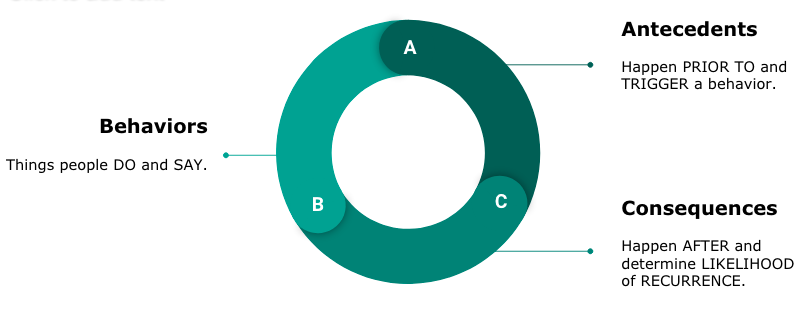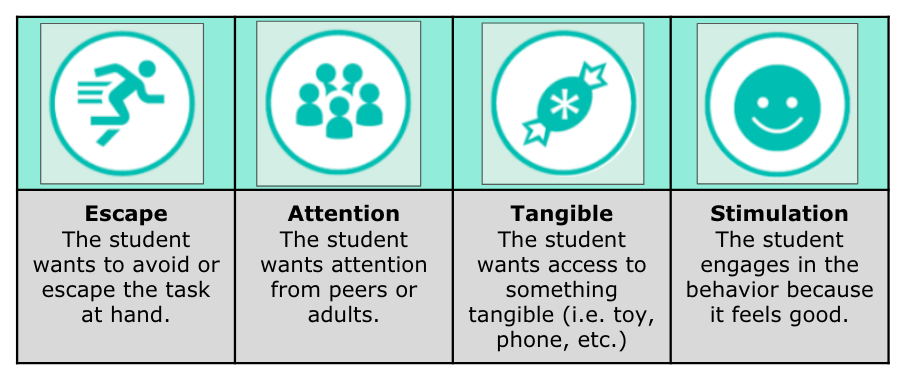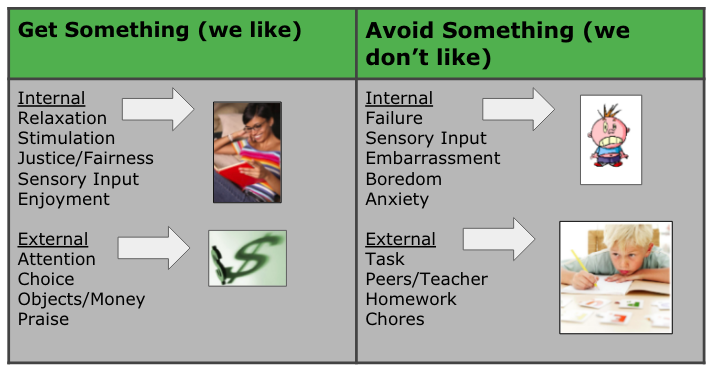What are the ABCs of behavior?
Behavior can be a tricky subject. Often we are faced with a challenging behavior and think "Wow, this is so random." However, all behavior can be defined and analyzed using the simple ABCs. Below is a brief introduction and refresher.

Antecedent: What happens before a behavior that makes the behavior more or less likely to occur. This can happen immediately before the behavior or have a longer lead up (i.e. a specific academic request, not having a breakfast before PE class 1st period).
Behavior: What the student does. This is what you see and it is either a behavior excess or a behavior deficit. So we see too much of something or not enough of something.
Consequence: What happens after the behavior. It can be positive or negative, intentional or unintentional.
Why do behaviors occur?

Every behavior has a purpose, or what we call a function. Whether a child knows it or not, their behavior is serving to meet a certain need that they are experiencing. There are four functions of behavior that follow the acronym EATS.
- Escape: The student is avoiding or getting away from something s/he deems unpleasant (running away, ignoring directions, etc.)
- Attention: The student is getting positive (or negative) attention from peers, teacher, or other staff
- Tangible: The student gets access to an object (food, toy, etc.)
- Sensory: The student would do this regardless if someone was looking or not, think head banging, picking, etc.
When it comes to behavior, we can think of the functions in terms of either gaining or avoiding something, either externally or internally.

Putting the ABCs Together
Often as teachers we see the behavior and then react/respond. Our reaction may provide the consequence (i.e. removing a student, providing attention, giving extra instructions, etc). During this behavior, we often don't take into account what was happening right before the behavior began. What happens before the behavior gives us important information on how to address the function and thus change the behavior.
- For example, a child with aggressive behaviors may initially appear to be striking adults at random. However, when her teacher begins recording the antecedents of the behaviors, she notices that the child often engages in aggressive behavior after working on a task for an extended period of time. The teacher may begin to wonder if the child is becoming aggressive in order to end the task and escape from the unpleasant experience.
